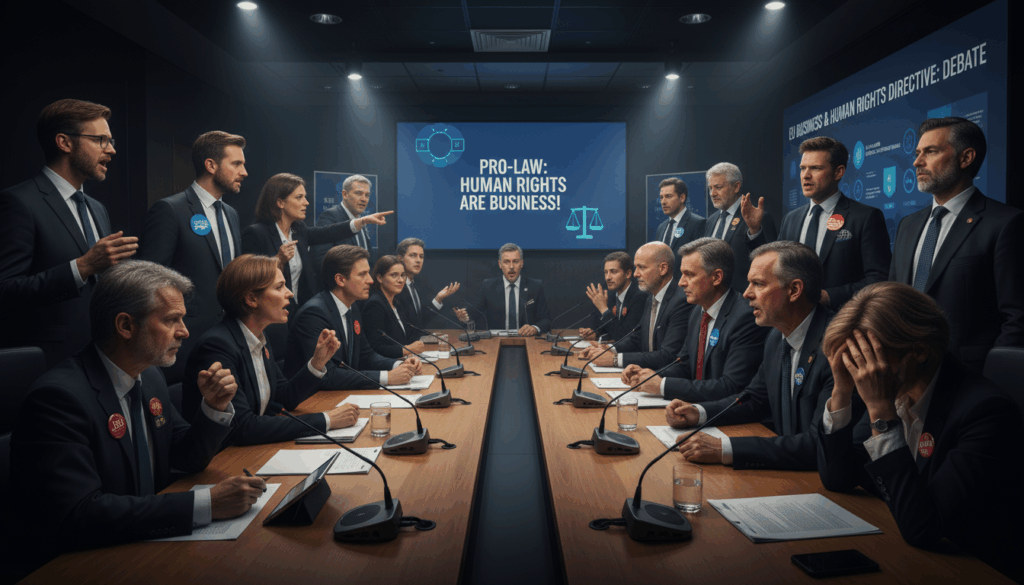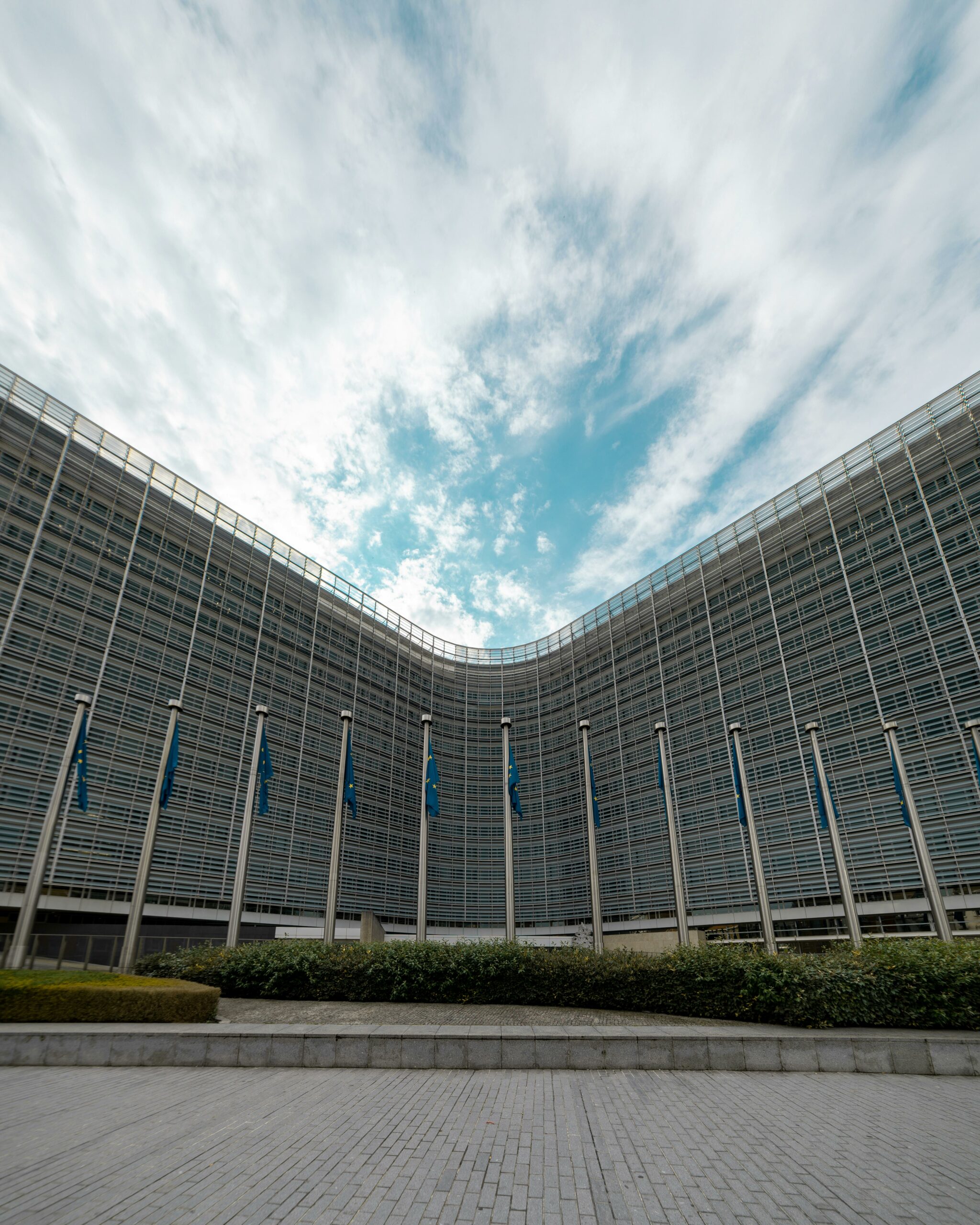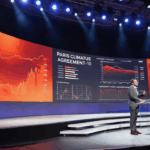CSDDD faces deep cuts via EU Omnibus. Why do companies diverge? What should businesses do now to stay ahead?
Europe’s Due Diligence Directive at a Crossroads
The Corporate Sustainability Due Diligence Directive promised something radical. It would create a level playing field. Western companies complained for years about unfair competition. Emerging economy rivals operated under lighter rules. They avoided costly human rights checks. They skipped environmental safeguards in supply chains.
The CSDDD would change that. Adopted in 2024, it set uniform standards. Any large company in EU markets would face identical obligations. Geography wouldn’t matter. A Chinese manufacturer would follow the same rules as a German one. At least, that was the theory.
Less than a year later, everything has changed. The European Commission’s Omnibus Simplification Package arrived in February 2025. It fundamentally reshaped the directive. Scope narrowed dramatically. Requirements weakened substantially. Timeline delays pushed implementation years into the future.
By October 2025, the political battle intensified. The European Parliament’s Socialists and Democrats accepted the conservatives’ position. Trilogue negotiations began between Commission, Council, and Parliament. The directive’s fate hung in the balance.
Most remarkably, corporate Europe split into opposing camps. Siemens CEO Roland Busch and TotalEnergies CEO Patrick Pouyanné led 46 executives. They demanded complete abolition of the CSDDD. Meanwhile, Ferrero, Mars, and Nestlé took the opposite stance. They urged maintaining strong sustainability regulations.
Why this dramatic divergence? What explains such antinomian dynamics? And what should businesses do when regulation becomes this unpredictable?
The Level Playing Field Promise—Why Europe Needed the CSDDD
The CSDDD emerged from a fundamental competitive grievance. European businesses faced escalating costs from sustainability compliance. Meanwhile, competitors from North America, China, and emerging economies operated under different rules. This created structural disadvantages in global markets. Consider the dynamics.
- A French textile company implements rigorous labor audits. It strives to ensure fair wages throughout Asian supply chains. It invests in environmental safeguards at supplier facilities. These practices cost money. They require dedicated staff, monitoring systems, and corrective actions.
- Across the border, a competitor sources from identical regions. But their home jurisdiction requires no such diligence. They face no penalties for supply chain violations. Their cost structure remains leaner. Their prices stay more competitive.
This pattern repeated across industries. German manufacturers complained about Chinese state-subsidized rivals. Italian fashion houses noted Turkish competitors avoided environmental compliance. Nordic food companies watched Brazilian agricultural exporters operate without human rights oversight.
The CSDDD aimed to establish a common floor for sustainability due diligence. It would level the playing field for companies operating in the EU. The mechanism was elegant. Any company generating substantial EU turnover would face identical obligations. Origin became irrelevant.
The Harmonization Imperative
Before CSDDD, Europe already suffered from fragmentation. France passed its Duty of Vigilance Act in 2017. Germany followed with its Supply Chain Due Diligence Act in 2021. Belgium, Netherlands, and Spain planned similar laws. Each jurisdiction created different requirements. Companies navigated a patchwork of obligations. The CSDDD sought to harmonize due diligence requirements across EU Member States. It aimed to level the playing field for companies active in the EU market. This harmonization mattered for two reasons. First, it eliminated competitive advantages from jurisdictional arbitrage within Europe. Second, it created predictable rules for international competitors.
The extraterritorial dimension proved even crucial. The CSDDD complemented the Corporate Sustainability Reporting Directive in forming part of the EU’s policy to foster an economy that works for people. Together, these instruments promised genuine accountability. Consider how this would work in practice.
- A major Indian pharmaceutical company exports to Europe. Its EU turnover exceeds relevant thresholds. Under CSDDD, it must implement human rights due diligence. It must assess environmental impacts in its value chain. It must engage stakeholders and establish grievance mechanisms.
- Without CSDDD, this company faces no such requirements. Its European competitors do. The playing field slopes accordingly.
Beyond Disclosure to Action
The CSDDD went beyond reporting requirements. It mandated actual impact on identified risks. Companies must identify risks, prevent impacts, mitigate harm, and provide remediation. The directive created liability exposure for failures.
This action-oriented approach differentiated CSDDD from earlier frameworks. While the CSRD mandates reporting of material impacts, the CSDDD required companies to actively address those impacts. The combination created comprehensive accountability.
The civil liability provisions particularly mattered. Companies could face damage claims for human rights or environmental harm. This financial exposure incentivized robust compliance. Sustainability transformed from voluntary initiative to business necessity.
The Competitive Case for Sustainability
Proponents argued CSDDD would ultimately enhance competitiveness. It would drive innovation in sustainable practices. It would protect European companies from reputational risks. It would position them advantageously as global standards tightened.
A recent survey confirms broad CS3D support. 63% of executives across five major EU economies support mandatory climate transition plans for large companies. They urge the Commission to maintain robust sustainability frameworks. They emphasized the necessity of standardized ESG information for informed investment decisions. From this perspective, strong due diligence doesn’t handicap companies. It protects them.
The investor logic proved compelling as well. Sustainability risks are financial risks. Climate impacts disrupt operations. Human rights violations trigger boycotts. Environmental degradation destroys value chains. Companies without robust due diligence face catastrophic exposure.
Yet this long-term strategic view collided with immediate competitiveness anxieties. And when those anxieties reached policymakers, the CSDDD’s future grew uncertain.
The Omnibus Gutting—How Regulation Collapsed
The Omnibus Simplification Package fundamentally rewrote the CSDDD. Presented on February 26, 2025, it proposed sweeping changes. By October 2025, these changes moved toward reality. The European Parliament’s position solidified. Trilogue negotiations began.
October 2025: The Scope Narrows Dramatically
On October 8, 2025, the European Parliament’s Socialists and Democrats accepted the European People’s Party position. This marked a crucial turning point. The amended scope would proceed to trilogue negotiations. The three EU institutions showed growing convergence. All three now agree on key threshold changes.
- Companies with fewer than 1,000 employees gain complete exemption.
- The financial threshold remains contested. The Commission proposed €50 million turnover. Both Council and Parliament support €450 million instead.
- For CSDDD specifically, consensus formed around even higher bars. The threshold jumps to 5,000 employees and €1.5 billion turnover. This dramatically narrows the directive’s scope. It excludes the vast majority of companies.
Most critically, all three institutions now agree to eliminate any harmonized civil liability regime. This represents the complete reversal of CSDDD’s original accountability mechanism. The provision that promised uniform consequences across Europe simply disappears.
February Proposals: The First Wave of Dilution
The erosion began months earlier. The February Omnibus introduced fundamental changes under the banner of competitiveness. It aimed to reduce administrative burdens by 25% for large companies. For SMEs, the target reached 35%.
Timeline delays came first. The transposition deadline moved from July 2026 to July 2027. The first wave application shifted from July 2027 to July 2028. Companies received an extra year for preparation.
Yet this delay had cascading effects. Companies adopted wait-and-see postures. Implementation efforts stalled. The urgency evaporated. Competitive advantages for early movers disappeared.
Value Chain Scope Severely Restricted
Perhaps most consequentially, the Omnibus narrowed value chain coverage. The original CSDDD required companies to assess both direct and indirect business partners. The amended version introduces critical limitations. In-depth risk assessments for indirect partners now require “plausible information” suggesting adverse impacts. Without such information, companies can ignore distant suppliers. This creates massive loopholes in practice. Ignorance can basically trigger a non risk conclusion, and compliance. Consider global electronics supply chains:
- A European brand sources from Asian assemblers. Those assemblers use component manufacturers. Components incorporate minerals from African mines. Under original CSDDD, the brand must assess the entire chain.
- Under Omnibus rules, the brand focuses primarily on direct partners. It assesses assemblers but not component makers. It certainly ignores distant mining operations.
- Unless “plausible information” surfaces, ignorance becomes compliance.
The burden of proof shifts fundamentally. Companies can claim they lack information about indirect suppliers. The opacity of supply chains becomes a defense. Systematic due diligence gives way to reactive investigation.
Monitoring and Engagement Gutted
Operational requirements suffered severe cuts. Companies now face monitoring obligations every five years instead of annually. In rapidly evolving sectors, five-year cycles guarantee blind spots. Significant adverse impacts can emerge, escalate, and cause irreversible harm between reviews.
Stakeholder engagement requirements were similarly weakened. The Omnibus proposal narrows stakeholder scope to those “directly affected” by operations. This potentially excludes civil society organizations, trade unions, and community representatives.
These groups often serve as early warning systems. They identify emerging risks before they become crises. Their exclusion reduces due diligence quality. It also limits accountability mechanisms. Fewer voices can hold companies responsible.
Civil Liability Elimination
The civil liability provisions faced complete deletion. The original CSDDD established specific, EU-wide liability rules. These would apply as overriding mandatory provisions even under non-EU law. The Omnibus package eliminates this entirely.
Instead, the revised directive defers to varying national liability regimes. This reintroduces fragmentation within the EU. A company might face substantial liability in France but minimal exposure in another member state. The level playing field disappears.
The elimination also removes uniform standards for non-EU competitors. Without harmonized liability, competitive dynamics revert to jurisdictional arbitrage. Companies structure operations to minimize exposure. The original CSDDD purpose evaporates.
Climate Transition Plans Downgraded
CSDDD initially made a useful linkage between human rights and climate risks mitigation. The Omnibus removes requirements for companies to “put into effect” climate transition plans. The focus shifts to adopting plans rather than executing them. Companies must outline intended actions. But they face no mandate to implement those actions.
This change fundamentally weakens climate accountability. Companies can draft aspirational documents without meaningful follow-through. The gap between commitment and action widens. Climate goals become performative rather than practical.
A Regulatory Landscape Eventually More Fragmented Despite Harmonization Goals
The legislative process remains fluid. Once published officially, the Simplification Omnibus requires approval from Parliament and Council. The Commission requested “fast track” treatment. Yet the timetable stays unclear.
The Commission submitted two separate proposal directives. The first focuses solely on postponing disclosure requirements and transposition deadlines. By separating issues, it aims for quick agreement on delays. This buys time for negotiating fundamental changes.
Member States that already transposed CSRD and CSDDD must amend implementations within 12 months. For example, Belgium transposed the original CSRD into national law already. That legislation currently remains in effect. Conversely, Belgium hasn’t yet transposed CSDDD.
This creates additional complexity. Companies operating across borders face shifting requirements. National implementations diverge from EU directives. The regulatory landscape becomes increasingly fragmented despite harmonization goals.
Corporate Schism—Why Business Splits on Sustainability Regulation
The most fascinating development isn’t the Omnibus itself. It’s the corporate response. European business has fractured into opposing camps. The divergence reveals fundamental tensions about regulation, competition, and corporate strategy.
The Abolitionists: Siemens and TotalEnergies Lead the Charge
On October 6, 2025, 46 German and French CEOs sent a letter. It went to Chancellor Friedrich Merz and President Emmanuel Macron. The message was unambiguous. They demanded “full abolishment of CS3D as a clear and symbolic signal.”
Patrick Pouyanné, CEO and Chairman of TotalEnergies, signed on behalf of all 46. Roland Busch, President and CEO of Siemens, co-signed. These aren’t marginal players. Siemens employs over 300,000 people globally. TotalEnergies ranks among the world’s largest energy companies.
Their letter went beyond CSDDD repeal. It outlined a comprehensive deregulatory agenda. They called for reframing competition policy to enable strategic mergers. They demanded a moratorium on digital rules including the Data Act and AI Act. They wanted a freeze on new EU directives. They insisted on simplification by January 1, 2027.
The energy measures particularly revealed priorities. They called for delaying reductions of free emissions allowances until EU’s Carbon Boarder Adjustment Mechanism proves effective. They demanded an “Energy & Climate omnibus” embedding “technology neutrality.” The subtext was clear. Climate regulation constrains business.
The Supporters: Commodity Companies Defend Sustainability Rules
Just days earlier, a different coalition emerged. On October 2, 2025, companies from across commodity sectors sent their own letter. The signatories included Ferrero, Mars, and Nestlé. They wrote to Environment Commissioner Jessika Roswall.
Their message opposed the abolitionists directly. They argued that “clear, predictable, and comprehensive regulations on environmental and human rights responsibilities are important for the EU’s long-term competitiveness.” This framing inverted the competitiveness argument.
These companies operate in cocoa, dairy, rubber, wood, and agri-food sectors. Their concern extended to the EU Deforestation Regulation (EUDR). But their underlying logic applied equally to CSDDD. Strong regulations create certainty. Weak regulations create risk.
The letter emphasized good-faith investments. Companies and value chain partners had actively prepared for compliance. They invested based on trust. The European legislative framework and timeline seemed reliable. Proposed delays now put those investments at risk.
Their concern wasn’t merely financial. “The proposed delay puts at risk the preservation of forests worldwide, will accelerate climate change impacts, and undermines trust in Europe’s regulatory commitments.” They viewed sustainability regulation as protecting their long-term interests.
Decrypting the Divergence: What Explains the Split?
Why do Siemens and Nestlé reach opposite conclusions? Both are multinational corporations. Both compete globally. Both face pressure from investors, consumers, and regulators. Yet their positions diverge fundamentally.
Supply Chain Complexity and Exposure
The first factor involves supply chain structure. Food and commodity companies have inherently complex, risk-laden value chains. Nestlé sources cocoa from West Africa. Mars relies on palm oil from Southeast Asia. Ferrero depends on hazelnuts from Turkey.
These supply chains carry enormous reputational risk. Child labor in cocoa production threatens brand value. Deforestation from palm oil triggers consumer boycotts. Poor labor conditions generate media scandals backed-up by impressive accidents (e.g.: Rana Plaza). For these companies, due diligence isn’t regulatory burden. It’s business protection.
Siemens and TotalEnergies operate with fundamentally different value chains. Siemens manufactures industrial equipment, infrastructure technologies, and automation systems. TotalEnergies extracts, refines, and distributes energy. Their supply chain risks, while undoubtedly present, have different characteristics. Notably, they are generally far removed from end consumers, except in the case of an oil spill, for example. Projects are often supported by strategic contracts with governments. Execution occurs in assets that are more opaque to understand for outsiders, for example cascading operational execution across contractors of contractors, within assets – factories or sites – generally closed to the public.
Competitive Dynamics and Market Position
The second factor involves competitive positioning. Food companies face fierce competition from unregulated rivals. A Brazilian coffee exporter or Vietnamese seafood processor may operate without due diligence requirements. If European competitors must implement costly systems while rivals don’t, the playing field slopes.
For Nestlé, Mars, and Ferrero, strong EU regulation creates competitive advantage. It forces all players in European markets to meet minimum standards. It prevents a race to the bottom. It rewards companies that invested early in sustainability systems.
Siemens and TotalEnergies occupy different competitive landscapes. Their main rivals are other Western multinationals or Chinese state enterprises. In their sectors, regulatory burden affects everyone similarly. Or they believe deregulation benefits them more than standardized requirements.
Investor Pressure and Financial Markets
The third factor involves investor expectations. Food companies face intense scrutiny on sustainability. Major institutional investors demand ESG performance. Ratings agencies assess supply chain practices. Fund managers screen for deforestation risk.
For these companies, strong regulation aligns with investor demands. It provides clear frameworks for meeting expectations. It creates data for disclosure. It demonstrates commitment to stakeholders. Weak regulation leaves them vulnerable to criticism.
Industrial and energy companies face different investor pressures. While ESG matters, financial returns often dominate. Short-term profitability can outweigh long-term sustainability. Regulatory compliance represents cost without obvious benefit. Their investor base may prioritize different factors.
Strategic Horizons and Business Models
The fourth factor involves time horizons. Food companies operate in consumer-facing markets. Brand value depends on trust. Reputation damage can be catastrophic. They think in decades, not quarters.
Climate change directly threatens agricultural supply chains. Deforestation reduces cocoa yields. Water scarcity impacts dairy production. Social instability disrupts sourcing. For food companies, sustainability isn’t optional. It’s existential.
Energy and industrial companies face different pressures. TotalEnergies must navigate energy transition. But its business model depends on fossil fuel extraction. Strict climate regulation threatens core operations. From this perspective, deregulation preserves options.
The Political Economy of Corporate Lobbying
The fifth factor involves political power. Large industrial and energy companies wield enormous influence. They employ thousands. They contribute to GDP. They maintain close relationships with political leaders. When they speak, governments listen.
The October 6 letter landed after the Franco-German business leaders’ meeting in Evian, France. Its timing wasn’t accidental. It leveraged political momentum toward deregulation. It framed abolition as economically necessary. It positioned sustainability as competitiveness threat.
Food companies lack equivalent political weight. They’re dispersed across sectors. They operate through trade associations. Their individual voices carry less force. This power asymmetry shapes regulatory outcomes.
What This Means for Corporate Strategy?
EU Commission Position in Response to the Abolitionists and the Supporters
Teresa Ribera, Executive Vice-President for a Clean, Just and Competitive Transition, responded on LinkedIn. “I appreciate the commitment to a more competitive Europe. Competitiveness cannot come at the expense of the environmental and social standards that define Europe’s democracies.” She continued: “No one should be mistaken, we will not lower these standards because there is no competitiveness in a race to the bottom.” This response defended regulatory integrity. It rejected the abolitionists’ framing. Yet her position faces political headwinds. Germany’s government committed to “abolish the National Supply Chain Due Diligence Act.” Chancellor Merz joined President Macron questioning CSDDD continuation. Poland, Italy, and Greece support simplification. The pro-regulation coalition weakens.
What This Means for Corporate Strategy
The corporate schism creates strategic implications. Companies cannot rely on uniform regulatory environments. They face divergent pressures from different stakeholders. They must navigate contradictory signals. Good news if any: That’s been the case navigating the sustainability agenda for decades. Bad news: CSDDD aimed at overcoming this challenge and basically failed.
What we know today:
- The food company position suggests one path. Embrace regulation. Invest in robust systems. Build competitive advantage through leadership. Position sustainability as business protection rather than burden.
- The industrial company position suggests another path. Fight regulation. Delay implementation. Minimize compliance. Preserve operational flexibility. Prioritize short-term cost control.
Yet a third path may prove wisest. Neither fighting nor merely complying, but strategically implementing due diligence regardless of regulatory requirements. This approach recognizes that business risks exist independent of regulation.
Conclusion: Strategic Due Diligence Beyond Regulatory Uncertainty
Business Risks Don’t Follow Regulatory Calendars
The CSDDD’s trajectory reveals a fundamental truth. Regulation remains unpredictable. Political winds shift rapidly. Corporate lobbying shapes outcomes. Today’s requirements may disappear tomorrow. Tomorrow’s obligations may emerge unexpectedly.
Yet business risks don’t necessarily follow regulatory calendars. Supply chain disruptions happen regardless of compliance deadlines. Climate impacts intensify whether or not directives pass. Human rights violations damage brands independent of legal frameworks. Social instability threatens operations with or without due diligence mandates. Pandemic risks may occur again anytime soon. None of those risks are primarily driven by whatever regulation, yet they do impact business anyhow.
The corporate schism illuminates competing strategies. Some companies fight regulation hoping for elimination. Others embrace requirements anticipating competitive advantage. Both approaches share a flaw. They make sustainability contingent on external mandates.
The Third Way: Strategic Independence from Regulatory Flux
A wiser approach exists. Implement robust due diligence systems regardless of regulatory direction. Build comprehensive value chain visibility. Establish stakeholder engagement mechanisms. Create early warning systems for emerging risks. Develop corrective action processes. This approach offers multiple advantages.
- First, it protects against business risks that exist independently of regulation. Supply chain failures cost money whether CSDDD applies or not. Reputation damage hurts brands regardless of legal liability.
- Second, it positions companies advantageously no matter how regulation evolves. If CSDDD strengthens, prepared companies gain competitive advantage. If CSDDD weakens, prepared companies still capture business benefits. The investment pays regardless.
- Third, it satisfies investor demands for ESG performance. 214 investors controlling €6.6 trillion urging the EU to enforce robust CSDDD aren’t going away. They demand sustainability data whether regulators require it or not. Companies without robust systems can’t meet their expectations.
- Fourth, it builds operational excellence. Understanding supply chains reduces costs. Identifying risks prevents disruptions. Engaging stakeholders improves decision-making. Managing impacts increases efficiency. Due diligence isn’t regulatory burden. It’s management capability.
Understanding Operations, Managing Costs, Increasing Margins
The strongest argument for robust due diligence is purely commercial. Companies with deep supply chain understanding outperform competitors. They identify cost-saving opportunities. They optimize sourcing decisions. They reduce waste and inefficiency.
- Consider procurement. A company assessing supplier labor practices discovers productivity variations. Some factories maintain high standards and high output. Others cut corners and underperform. The insights enable better sourcing decisions. Quality improves while costs decrease.
- Consider risk management. A company mapping environmental exposures identifies drought vulnerabilities. It diversifies sourcing before climate impacts materialize. Competitors lacking this visibility face disruptions. Market share shifts to better-prepared players.
- Consider innovation. A company engaging stakeholders learns about emerging materials. Local communities identify sustainable alternatives. The company develops new products. It enters markets competitors haven’t imagined. Stakeholder dialogue drives competitive advantage.
- Consider finance. A company demonstrating ESG performance accesses capital more easily. Interest rates reflect lower risk profiles. Investors pay premiums for sustainable portfolios. The cost of capital declines measurably.
These benefits accumulate independent of regulation. They flow from operational excellence. They reward management capability. They create lasting competitive advantages.
The Ksapa Advantage: Navigating Complexity with Strategic Expertise
This is where Ksapa delivers unique value. The regulatory landscape remains uncertain. The Omnibus creates confusion. Trilogue negotiations continue. Final requirements remain unknown. Companies face strategic paralysis.
Ksapa helps clients cut through uncertainty. We don’t wait for regulatory clarity. We build robust due diligence systems that deliver business value now. We focus on operational excellence that drives results regardless of compliance requirements.
Our Approach: Four Strategic Pillars
With global footprint and 20+ years of expertise on these issues, we provide skills, experience and methodologies to navigate the complexity. We guide our clients designing and implementing programs across four strategic pillars:
- First, comprehensive value chain mapping. We help companies understand their supply networks completely. Not just direct suppliers, but entire ecosystems. Not superficial documentation, but deep operational insight. This visibility enables strategic decision-making.
- Second, risk identification and prioritization. We assess human rights exposures, environmental vulnerabilities, and social instabilities. We quantify financial implications. We prioritize interventions based on business impact. This focuses resources where they matter most.
- Third, stakeholder engagement design. We create meaningful dialogue mechanisms. We identify relevant voices throughout value chains. We build early warning systems through community relationships. We transform stakeholders from compliance requirements into strategic assets.
- Fourth, performance optimization. We identify cost-saving opportunities through better supply chain management. We uncover efficiency gains from improved practices. We quantify margin improvements from operational excellence. We make sustainability profitable.
Why Clients Choose Ksapa
Our expertise spans industries and geographies. We understand agricultural supply chains. We navigate manufacturing complexities. We assess mining operations. We evaluate service sectors. Our global perspective combines with local knowledge.
Our team brings diverse capabilities. Sustainability specialists work alongside supply chain experts. Human rights practitioners collaborate with financial analysts. Legal specialists partner with operational managers. This integration delivers comprehensive solutions.
Our track record demonstrates results. We’ve helped multinational corporations transform supply chain management. We’ve supported medium-sized enterprises in building robust systems. We’ve enabled family businesses to compete with larger rivals. Our clients achieve measurable improvements.
Most importantly, we align incentives correctly. We don’t sell compliance checklists. We don’t deliver box-ticking exercises. We build business capabilities that enhance performance. We measure success by client outcomes, not regulatory satisfaction.
Conclusion: Act Now While Competitors Hesitate
Regulatory uncertainty creates strategic opportunity. While Siemens and TotalEnergies lobby for abolition, while others wait for clarity, forward-thinking companies can gain decisive advantages. They can build capabilities competitors lack. They can capture insights others miss. They can position themselves for success regardless of outcomes.
The companies thriving in coming years will be those acting today. They won’t wait for regulatory mandates. They won’t fight legislative requirements. They’ll implement robust due diligence because it makes business sense. They’ll understand operations deeply because it improves performance. They’ll manage supply chains excellently because it increases margins.
The CSDDD may pass in diluted form. It may face further weakening. It may even disappear. None of this changes fundamental business imperatives. Supply chain risks remain. Climate impacts intensify. Social expectations grow. Investor demands increase.
The question isn’t whether to implement due diligence. The question is how to implement it strategically. How to build systems that deliver business value. How to create capabilities that enhance competitiveness. How to transform sustainability from cost center to profit driver.
Ksapa answers these questions. We bring proven methodologies, global experience, and strategic insight. We help companies navigate complexity. We build operational excellence. We deliver measurable results.
Let’s discuss your supply chain challenges. Let’s assess your risk exposures. Let’s identify opportunities for improvement. Let’s build due diligence systems that work regardless of regulatory direction.
The future belongs to companies understanding their operations deeply, managing costs effectively, and increasing margins strategically. Partner with Ksapa. Transform sustainability from regulatory burden into competitive advantage. Start building that future now.
Visual designed by Freepik
Author of several books and resources on business, sustainability and responsibility. Working with top decision makers pursuing transformational changes for their organizations, leaders and industries. Working with executives improving resilience and competitiveness of their company and products given their climate and human right business agendas. Connect with Farid Baddache on Twitter at @Fbaddache.






